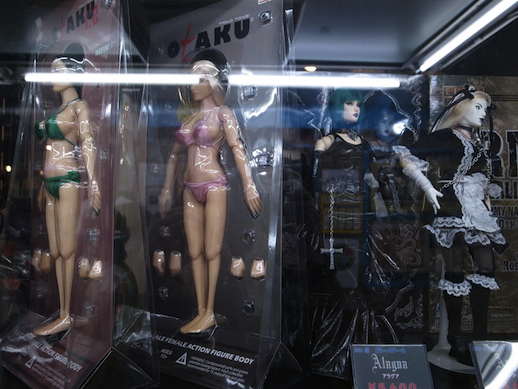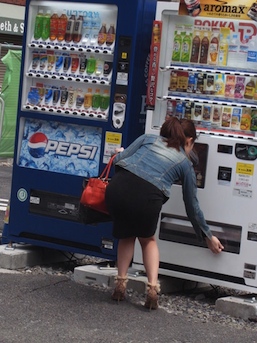Readymade Distortion
Although Daido Moriyama has been extremely active over the last few years, it’s seemed like much of this output has been trading off of the success of his earlier work. Of course, he’s already cemented his place in the history of photography, but, combined with Daido doodads of all sorts flooding the market, unexciting books like “Nagisa” and re-releases of old photographs was enough to make one question whether or not he had anything left to offer our time.
Now, Moriyama is presenting a new exhibition at Taka Ishii Photography/Film, “Color”, through June 9. It’s a collection of photos shot over the last four years in Tokyo on a digital camera, and it marks the return of Moriyama as a vital artist, rather than just a living legend.

 The photographs in “Color” generally show an older or unglamorous side of Tokyo. Moriyama often collects urban signage and texture, much of which has been weathered over the years. Newer things do appear, but they’re never glitzy. One photo shows a woman bending down to grab a drink out of a vending machine. Everything about this image is nondescript: all we can really see besides the woman, and the vending machine, is another vending machine. This photo, among others, recalls Ryudai Takano’s work “Kasubaba,” a recent series in which Takano set out to take the ugliest possible photos of Japan—and ended up with scenes very much like this one.
The photographs in “Color” generally show an older or unglamorous side of Tokyo. Moriyama often collects urban signage and texture, much of which has been weathered over the years. Newer things do appear, but they’re never glitzy. One photo shows a woman bending down to grab a drink out of a vending machine. Everything about this image is nondescript: all we can really see besides the woman, and the vending machine, is another vending machine. This photo, among others, recalls Ryudai Takano’s work “Kasubaba,” a recent series in which Takano set out to take the ugliest possible photos of Japan—and ended up with scenes very much like this one.
This is certainly not a strategy to wow an audience, and it’s possible that some visitors will walk in, take a quick look and walk out just as quickly. Unlike Moriyama’s signature black-and-white images, there is no immediate visual hook here. The photographs are obviously digital, looking as though they were printed straight from his SD card. There’s a technical parallel to the Moriyama of old, in that he’s found a way to distort his photographs, this time through readymade digital noise. If this effect is surprising it’s only in how incredibly unspectacular the images look. This is, though, in a sense, radical: at a time when much of Japanese photographic production is trying to find moments of beauty in everyday life, Moriyama’s intentionally crappy aesthetic keeps his work from being easily consumed.
Perhaps this explains why Moriyama’s recent black-and-white work has come across as a little drab: it was hard to see it as anything other than the realization of a well-honed process. After all, his style was originally (and intentionally) jarring, but it has now come to be so well received that today’s digital camera users have an option to willingly imitate it. It’s not that Moriyama’s subject matter has changed much, but by presenting it in this new light, he’s showing that his work is not just about technique—and maybe even showing (along with Takano) how to think about contemporary Japan. This stance should be encouraged. Someone asked me last week, “So, who’s saving Japanese photography?” I could hardly believe it myself, but I had no hesitation in putting forth Daido’s name.
Dan Abbe
Dan Abbe



